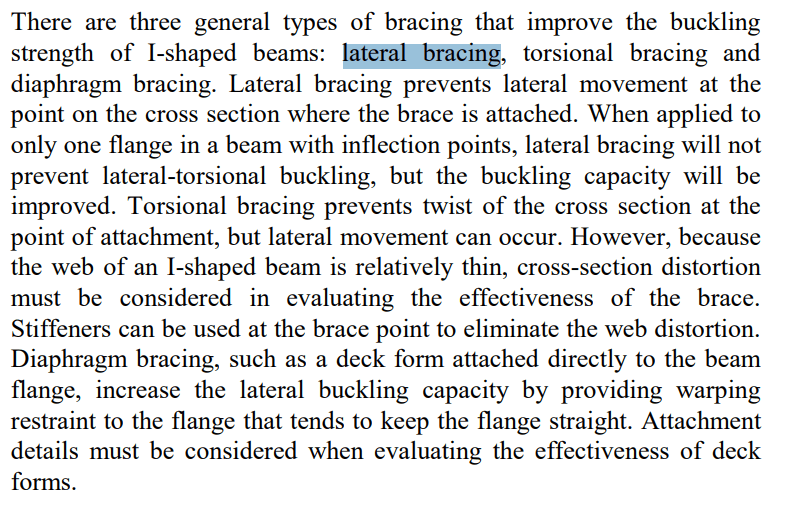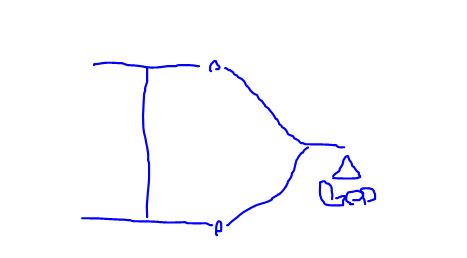AISC's Appendix 6, Section 6.3, the commentary says this:
Beam bracing must control twist of the section, but need not prevent lateral displacement.
Both lateral bracing, such as a steel joists attached to the compression
flange of a simply supported beam, and torsional bracing, such as a cross-frame or
vertical diaphragm element between adjacent girders, can be used to control twist.
If we taken a W-beam, how does the beam experience lateral only buckling? I understand how the LTB occurs, but I'm not sure why this section of the appendix separates the two. I guess the question is, how does a flexural member experience lateral only buckling? Wouldn't any form of lateral buckling instigate LTB?
Another question, why is panel bracing defined by Vbr, while point bracing is Pbr? For any brace, I see the force that enters the brace as an axial force. So why does panel bracing use the term shear?
Beam bracing must control twist of the section, but need not prevent lateral displacement.
Both lateral bracing, such as a steel joists attached to the compression
flange of a simply supported beam, and torsional bracing, such as a cross-frame or
vertical diaphragm element between adjacent girders, can be used to control twist.
If we taken a W-beam, how does the beam experience lateral only buckling? I understand how the LTB occurs, but I'm not sure why this section of the appendix separates the two. I guess the question is, how does a flexural member experience lateral only buckling? Wouldn't any form of lateral buckling instigate LTB?
Another question, why is panel bracing defined by Vbr, while point bracing is Pbr? For any brace, I see the force that enters the brace as an axial force. So why does panel bracing use the term shear?


